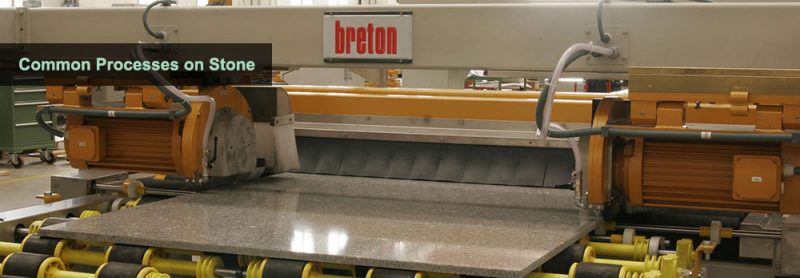
Common Processes on Stone
(Marble, Travertine, Limestone, Crystal, Onyx, Granite)

Grinding
For different stones there are different instructions before and during the process; and depending on the kind of stone, one must take special precautions in order not to damage the stone. One of these is filling of the pores and cracks of the stone with resin, cement, etc.
Resin Work
Often before the grinding phase, in order to increase the strength of stone and create a uniform-looking surface, a resin such as Epoxy, polyester or the new UV resin is used. The last resin, after being filled-in the stone, the stone must be put in a UV oven or before sunlight.
Leathering
In this process there is no limitation on the type of stone and all kinds of stones can be leathered. However, Travertine and marble stones are most often used, during which process the weaker parts are broken off and a surface of ups and downs is created.
Hammering
From the ancient times, the stones used in road-building were hammered by a tool looking like a mason’s hammer having metal nail-line protrusions and a wooden handle. By this method, the degree of slipperiness of the stone surface and the danger of sliding on the stone was thus reduced.
Tumbling
The aim of antiquing is to make the stone look old and antique. This process is used mostly on travertine stones, and the process is done by either of a chemical or mechanical method.
Weathering
The weathering or wind-erosion process in done after mining. The mined stone is hit by a hand-held sledgehammer so some thick layers get broken off the stone’s surface.
Serration
To serrate the stone is done by sandblasting, shot-blasting and flaming methods.
